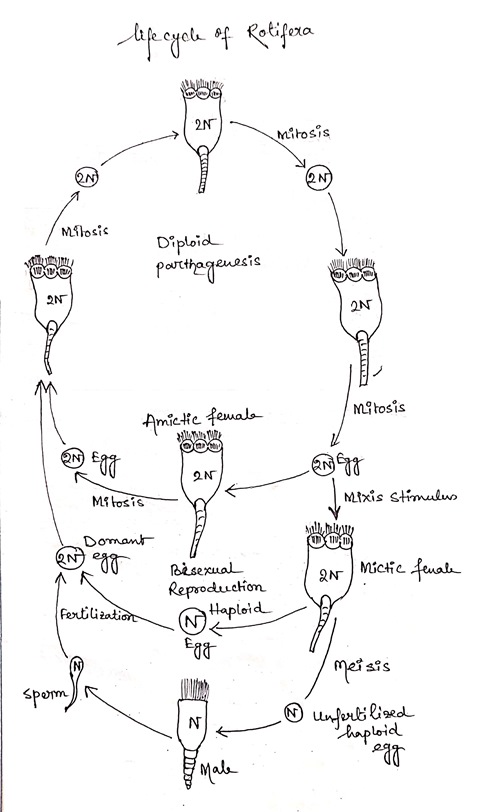Life cycle of Rotifera
In rotifera there are amictic females which produce large, thin walled and developed eggs which are incapable of being fertilised and developed into females. Where as the mictic females lay small sized, haploid, thin walled mictic eggs, Which are capable of being fertilised specially during later phase of the year when sexual season approaches.

The non reductional division occasionally is interrupted once or twice in the year by the development of a morphologically indistinguishable mictic females. The eggs of mictic females undergo normal double meotic divisions. If these mictic females are fertilised by males, the eggs developed into thick walled resting eggs that undergo a prolonged diapause and are highly resistant to adverse environmental conditions. If the mictic females are not fertilised, the much smaller eggs rapidly developed into males, the males are small sized, extremely active, short live and sperm producing organisms with least complex body organisation. They are capable of copulation with an hour of hatching. Hatching of resting eggs are induced by bio-chemical factors. They are capable of copulation with an hour of hatching. Hatching of resting eggs are induced by bio-chemical factors. The nature of which are poorly understood. The resting mictic eggs always result in parthenogenetic amictic females. The diapause extend over a period of several weeks or months and hatching is related to changes in temperature, osmotic pressure, water nutrients and dissolved oxygen.
- 251 reads
